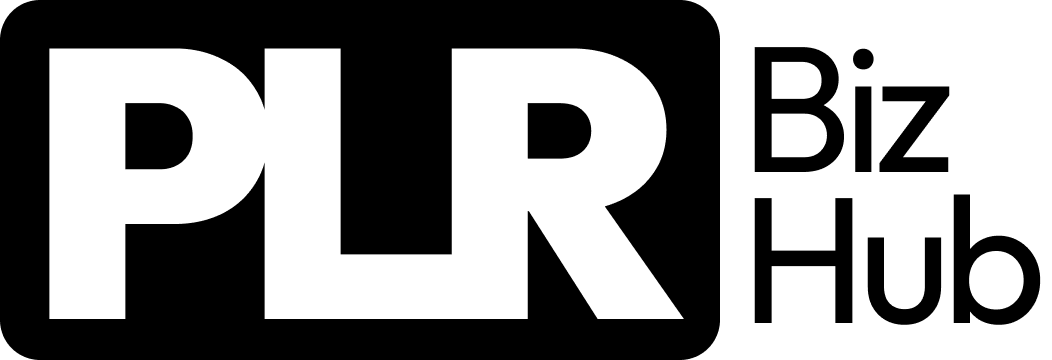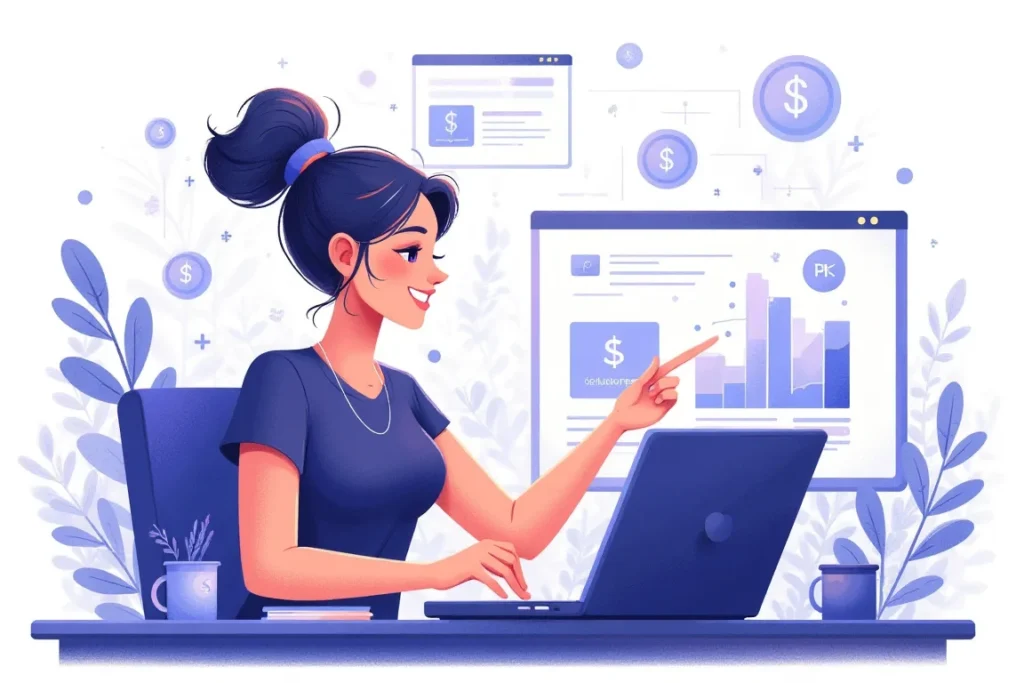Some PLR sellers treat this business like a vending machine—dump content, pull profit. But vending machines only work if you stock what people want. Right now, certain PLR categories command premium prices while others gather cobwebs. Understanding this difference isn’t just helpful—it’s make-or-break for your passive income dreams. Let’s expose which PLR products buyers can’t get enough of.
Key Takeaways
Digital product sales continue exploding as buyers crave instant solutions for modern problems. But not all PLR products sell equally. Let’s dissect which categories dominate today’s marketplace and why.
- Prewritten eBooks (especially in finance, health, and self-improvement)
- Online Courses (short, actionable modules with worksheets)
- Digital Templates (Notion, Canva, Google Sheets, planners)
- Stock Media (niche-specific photos, audio tracks, video clips)
- Membership Site Content (recurring value bundles)
Buyers prioritize time-saving solutions they can implement immediately. They’ll pay premium prices for products requiring minimal customization while delivering maximum perceived value. Search volume for “instant download templates” and “editable PLR courses” proves this trend isn’t slowing.
Stop wrestling with content creation from scratch. Our Ready-made Digital Products on plrbizhub.com deliver vetted, high-demand PLR assets you can sell immediately. Each package includes customization guides and conversion-optimized sales pages—so you skip the guesswork and start generating revenue while others are still researching.
The PLR Powerhouse Products Driving Sales
Understanding market demand saves you from creating products nobody wants. These categories consistently outperform others based on current search trends, platform analytics, and buyer behavior data.
Prewritten eBooks: The Evergreen Cash Machine
Despite being one of the oldest digital product formats, prewritten eBooks remain incredibly profitable when targeting the right markets.
Why eBooks Dominate:
- Buyers want instant knowledge without waiting for shipping
- Low file size means zero delivery friction
- Mobile reading convenience fits modern lifestyles
- High perceived value at low price points
Top-Selling eBook Niches Right Now:
- Personal Finance Hacks (debt elimination frameworks, side hustle blueprints)
- Mental Wellness Guides (anxiety reduction techniques, habit formation systems)
- Relationship Navigation (communication frameworks for couples, boundary setting tools)
- Niche Skill Builders (AI prompt engineering, TikTok growth strategies)
Proven Monetization Tactics That Work:
- The Premium Bundle: Combine three related eBooks into one “master guide” at 2-3x single price
- The Value Ladder: Offer free introductory eBook chapter as email opt-in, then sell full version
- The Urgency Play: Limit edition runs with special bonus content for early buyers
I’ve seen sellers transform $17 PLR eBook packages into $197 flagship products through strategic bundling and positioning. The secret? Customization depth. Add original case studies, update statistics, and redesign layouts so buyers can’t recognize the PLR roots.
Online Courses: Where PLR Meets Human Connection
Digital course sales are skyrocketing as learners prefer bite-sized, actionable knowledge over generic information. PLR courses let you enter this space without creating content from scratch.
Why Courses Convert Better Than eBooks:
- Visual + audio learning accommodates different styles
- Perceived higher value justifies premium pricing
- Built-in progression creates natural upsell opportunities
High-Demand Course Formats:
- Challenge-Based Learning: 5-7 day programs with daily implementation tasks
- Tool Mastery Courses: “Canva for Coaches” or “Notion for Entrepreneurs”
- Certification-Ready Content: PLR packages including completion certificates
Strategic Customization That Sells:
- Record personalized welcome videos introducing yourself as instructor
- Add worksheets specific to your audience’s pain points
- Swap generic examples for industry-specific scenarios
Platforms like Teachable and Thinkific make hosting these courses effortless. One client added five customized worksheets to a $47 PLR course package and now sells it for $297 as a “done-for-you implementation system.” The additional effort took three hours but increased revenue sixfold.
Digital Templates: The Silent Profit Giants
Digital templates generate shocking profits because they solve immediate, tangible problems. Buyers implement them within hours of purchase—not someday when they finally “have time.”
Top Template Categories Crushing It:
- Notion Workspace Templates (client management systems, content calendars)
- Canva Marketing Kits (social media bundles with 30+ customizable posts)
- Google Sheets Trackers (budget planners, habit trackers, project managers)
- Printable Planners (specialized for niches like real estate agents or new parents)
The Implementation Advantage:
Templates win because they deliver immediate actionability. A buyer purchases your budget planner and starts using it minutes later—creating instant satisfaction that drives reviews and referrals.
Pricing Strategy That Converts:
- Start with single templates at $7-$15
- Bundle related templates (e.g., “Social Media Starter Kit” with 30 posts + analytics tracker) at $27-$47
- Create “agency edition” bundles for service providers at $97+
I recently analyzed a top-selling PLR template seller—they charge $37 for a “small business operations bundle” containing seven customizable templates. Their production cost? Essentially zero after the initial PLR purchase. Monthly sales exceed 200 units with minimal marketing.
Stock Media: The Underestimated Goldmine
Photographers and designers aren’t the only ones profiting from stock media. Niche-specific media packages solve real problems for content creators drowning in generic stock options.
Profitable Stock Media Niches Today:
- Authentic Small Business Photos (real offices, genuine team interactions)
- Diverse Representation Packs (authentic disability/inclusion imagery)
- Industry-Specific B-Roll (stock video clips for coaches, fitness trainers)
- Royalty-Free Sound Libraries (background music for podcasts, meditation tracks)
Why Specialized Media Sells Better Than Generic:
Generic stock platforms like Shutterstock face buyer fatigue. Creators want authentic visuals matching their specific audience. A PLR package of “real estate investor lifestyle photos” outsells generic business imagery because it solves immediate, niche-specific problems.
Monetization Tactics Worth Copying:
- Offer “subscription access” to monthly updated media libraries
- Create bundles targeting specific content formats (e.g., “TikTok Creator Pack”)
- License commercially with extended rights at premium prices
Top sellers structure their offerings like Netflix for stock assets—recurring revenue while buyers get fresh content monthly. One PLR stock photo pack with 50 images sells as a $27 one-time purchase, but the same creator earns significantly more through their $15/month membership offering 200+ new images monthly.
Membership Site Content: Recurring Revenue Engine
Savvy PLR sellers avoid one-time transactions by creating membership sites. Instead of selling individual products, they offer ongoing value through subscription models.
Why Memberships Outperform Single Products:
- Predictable monthly revenue stabilizes income
- Higher lifetime customer value (LTV)
- Community-building creates powerful social proof
Profitable Membership Models Using PLR:
- The Content Vault: Monthly updated PLR resource library
- The Implementation Club: Weekly guided implementation sessions with PLR materials
- The Reseller Hub: Teach others to sell PLR while providing bulk content
Transition Strategy That Works:
Start with standalone PLR products, then invite buyers into your membership. This “foot-in-the-door” technique converts warm leads at remarkable rates. One client sold $27 PLR templates, then offered a $19/month “Template Toolkit Club” with monthly additions. Their membership retention rate exceeds 85% because ongoing value keeps subscribers engaged.
The magic happens when you combine PLR with your unique expertise—hosting live Q&As, adding commentary, or creating implementation challenges. This transforms generic content into valuable ongoing experiences worth recurring payments.
Useful Articles:
Maximizing Your PLR Profit Potential
Knowing what sells is half the battle. Let’s explore how to transform basic PLR assets into premium offerings buyers happily pay for.
The Customization Hierarchy: From Generic to Premium
Not all PLR modifications deliver equal profit potential. Apply changes strategically based on buyer value perception:
| Modification Level | Effort Required | Perceived Value | Price Potential |
|---|---|---|---|
| Surface Changes (logo, color scheme) | Low | Minimal | Slight increase |
| Structural Tweaks (rearrange content flow) | Medium | Moderate | 2-3x base price |
| Value Additions (new chapters, worksheets) | High | Significant | 5-10x base price |
| Complete Transformation (new positioning, examples) | Very High | Premium | 10x+ base price |
Focus your energy where buyers feel the difference. Adding a single worksheet specific to your audience might take 20 minutes but justifies doubling your price because it solves their exact problem.
Avoid These PLR Profit Killers
Even hot product categories fail when sellers make these critical mistakes:
The Unchanged Resell
Selling PLR products without customization triggers buyer suspicion. If five different sellers offer identical products, price becomes the only differentiator—starting a race to the bottom. Always add unique value before reselling.
The Over-Priced Generic
Positioning basic PLR as premium without justification backfires. Buyers easily recognize generic content and will call you out publicly. Match pricing to actual value provided.
The Ignored Targeting
Selling meal planning templates to general audiences versus busy single parents creates massive conversion differences. Hyper-targeted positioning beats generic broad appeal every time.
Fix these errors by:
- Creating audience-specific implementation guides
- Recording short videos addressing niche pain points
- Developing focused sales copy speaking directly to one ideal customer
Your PLR Profit Checklist
Before launching any PLR product, verify these profit triggers:
- The 24-Hour Test: Can buyers implement something valuable within one day of purchase?
- The Customization Score: Have you added at least 20% unique content beyond the original PLR?
- The Pricing Justification: Does your price match the actual transformation offered?
- The Upsell Potential: Have you created logical next-step offerings?
- The Shareability Factor: Will happy buyers naturally refer others based on results?
I’ve watched sellers transform struggling PLR businesses into thriving operations simply by applying this checklist to every product. Those who skip even one item typically see disappointing conversion rates.
The Monetization Matrix: Beyond One-Time Sales
Top PLR sellers build interconnected revenue streams rather than relying on single transactions. Structure your offerings like this:
Front-End Offer
- Low-priced entry product ($7-$27)
- Solves one immediate pain point
- Designed to convert cold traffic
Core Offer
- Main product ($27-$97)
- Comprehensive solution with customization guidance
- Highest profit margin item
Profit Maximizer
- Implementation support ($47-$197)
- Coaching calls, done-for-you services, advanced content
Recurring Revenue
- Membership subscription ($15-$49/month)
- Ongoing value delivery after initial purchase
This structure creates multiple touchpoints with buyers while matching their journey from awareness to loyalty. One PLR template seller implemented this model—converting 22% of template buyers into $29/month members creating stable recurring income.
Smart Packaging Strategies That Convert
How you present PLR products determines whether they collect dust or fly off virtual shelves.
The Transformation-Focused Naming System
Ditch boring titles like “Budget Template PLR.” Instead, name products based on desired outcomes:
- “Debt-Free in 90 Days Budgeting System” (instead of “Budget Spreadsheet”)
- “Client Onboarding Machine for Coaches” (instead of “Service Agreement Templates”)
- “Social Media Growth Engine” (instead of “Content Calendar PLR”)
Buyers purchase transformations, not products. Your naming should reflect the end result they want, not the tool itself.
The Value-Stacked Pricing Tiers
Create irresistible offers by structuring multiple pricing options that make your premium tier the obvious choice:
Basic Tier ($27)
- Core PLR product
- Basic implementation guide
- Standard licensing
Pro Tier ($67)
- Everything in Basic
- + 3 bonus implementation worksheets
- + 5-minute customization tutorial
- Extended commercial license
Elite Tier ($127)
- Everything in Pro
- + Done-for-you customization service
- + Monthly template updates for 3 months
- + Private community access
This structure increases average order value by guiding buyers toward higher-value options. Data shows 65% of buyers choose the middle tier, while 20% opt for premium—dramatically boosting revenue versus single pricing.
The Scarcity That Actually Works
Artificial scarcity (“Only 3 left!”) damages credibility. Instead, use authentic scarcity based on real limitations:
- “Monthly Template Bundle (New designs delivered 1st of each month)”
- “First 50 buyers get personalized setup session”
- “This updated version replaces previous edition; original no longer available”
Authentic scarcity creates urgency without gimmicks because buyers recognize genuine value limitations.
Useful Articles:
Platform Tactics: Where To Sell For Maximum Profit
Not all sales channels deliver equal results. Match your PLR products to the right platforms.
Your Own Website: The Profit Powerhouse
Selling directly through your website nets 100% of revenue versus platform fees elsewhere. Essential components:
- Dedicated Sales Page
Focused on buyer transformation rather than product features - Streamlined Checkout
One-click upsells after initial purchase - Automated Delivery
Instant access via email or account dashboard
Platforms like SendOwl or Gumroad make self-hosted sales surprisingly simple. One PLR seller moved from marketplace sales to her own site—increasing profits 300% despite identical traffic because she kept all revenue and controlled customer relationships.
Strategic Marketplace Presence
While your own site should be primary, select marketplaces still deliver valuable exposure:
- Etsy: Perfect for printable planners and design-focused templates
- Gumroad: Great for creators with existing audiences
- Selz: Strong for PLR bundles and course material
List products on 1-2 complementary marketplaces—not everywhere—to avoid brand dilution and pricing wars.
Community-Driven Sales
The most overlooked profit channel? Selling directly within relevant communities:
- Facebook groups where your ideal clients gather
- Niche forums related to your PLR topic
- Partner with complementary creators for joint promotions
Targeted community sales convert at dramatically higher rates than cold traffic because you’re reaching pre-qualified, interested buyers.
What PLR digital products are in demand to sell? The answer changes faster than digital trends, but one truth remains: buyers consistently reward products solving immediate problems with minimal implementation friction. Whether you choose prewritten eBooks, customizable templates, or membership content—your success depends on understanding what buyers actually want right now, not what sold last year. Focus on delivering genuine value through strategic customization, and you’ll transform PLR from a quick shortcut into a sustainable profit machine.




